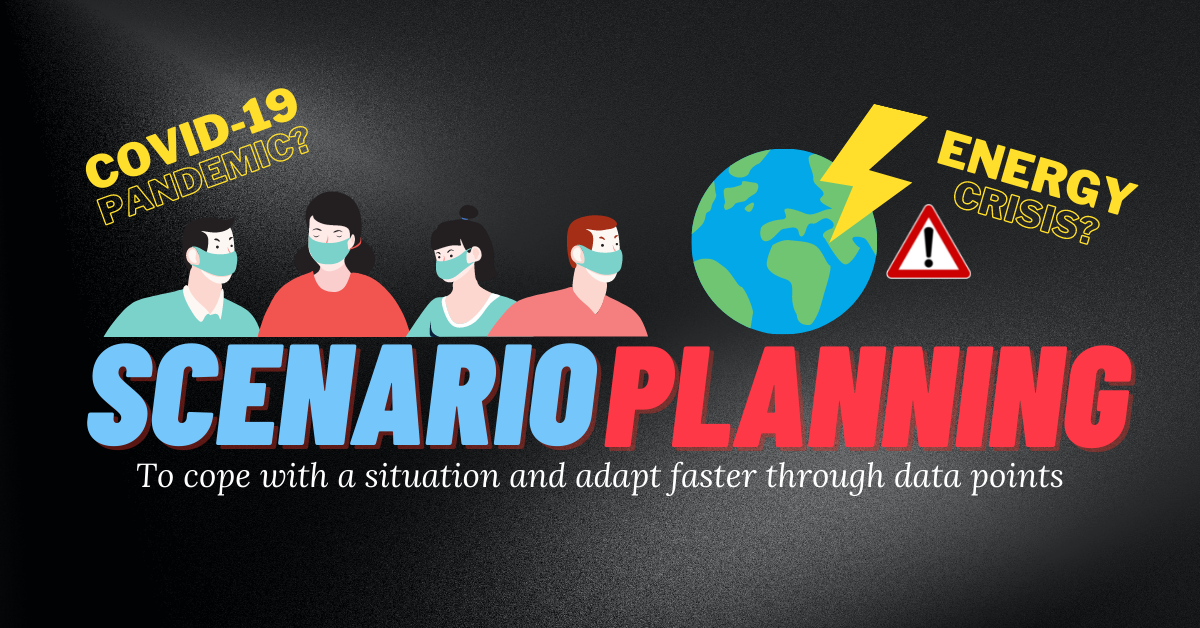The impact of inflation is being felt worldwide. People struggle to afford the rapidly increasing costs of basic needs and organizations are affected by rising costs of labor and raw materials straining profit margins. Today’s turbulent times require organizations to plan for inflation. It is just one of the many factors that have a high impact on the course of business but are very hard to plan for. A method that can prepare organizations for any possible future is scenario planning. Keep reading to learn what scenario planning is, how to follow the process and what benefits it has for decision-makers across all industries and businesses.
What is scenario planning?
Scenario planning is a strategic planning method. It describes a process in which alternate future scenarios are being planned as a basis for decision-making. Originally used by military intelligence, scenario planning is now widely used by organizations to create flexible long-term plans.
Generally, scenarios are based on assumptions on how the future will evolve and how an organization will be affected by a given future scenario. This enables the organization to adapt to possible changes and outcomes. Well-planned scenarios usually cover a wide range of possibilities to show how the organization’s environment might change over time.
What is scenario planning not?
Scenario planning does not prepare organizations to avoid a crisis. It rather helps them to be prepared when a crisis arises and provides guidelines on how to act moving forward, because the crisis has already been planned for. Nor does it provide a particular scenario to choose and build a strategy around. Scenario planning should never be about just choosing one future option, but about being prepared to deal with all possible outcomes and develop a strategy that is easily adaptable.
Why is scenario planning important?
Scenario planning enables leaders and decision-makers to think through a set of different scenarios. In an ideal situation, an organization will already know how to navigate a crisis because it was part of the scenario planning process. Thus, scenario planning offers a competitive advantage and enables leaders to act decisively. In a non-crisis situation, being prepared for different possible situations enables informed decision-making by providing a clear picture of key drivers and major future events.
How software can help
The process described above is a manual process that requires a lot of time and people to get right. Scenario planning is a perfect example of how an integrated business planning software like Jedox can support human planning by shortening the planning cycle significantly while keeping the data clear. Any future strategy should be based on data rather than solely on imagination or intuition.
With scenario planning software, all available data can simply be integrated and consolidated in one database. Any data can be used as a driver for scenario planning: for example, weather, seasons, or logistics costs. Software also enables the creation of best-case and worst-case scenarios at the push of a button. This leaves planners with more time to develop valuable strategies to adapt to different scenarios.
Request a live demo today and learn how Jedox can help your organization to navigate uncertainty.
It is worth noting that scenario planning is always based on past events and data. Any predictions are therefore an extension of past knowledge. No software could have predicted the COVID-19-pandemic or the war in Ukraine that led to the energy crisis and high inflation rates. What software can do, however, is help to cope with a situation and adapt faster through data points that might not be obvious to the human eye.


